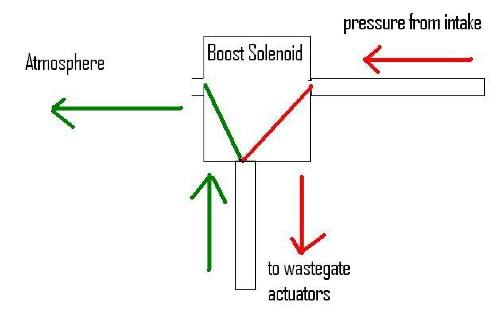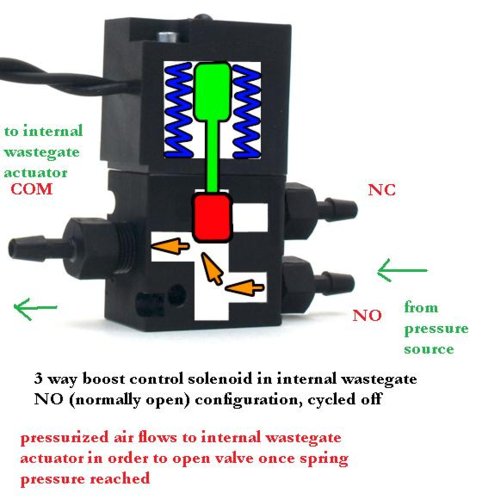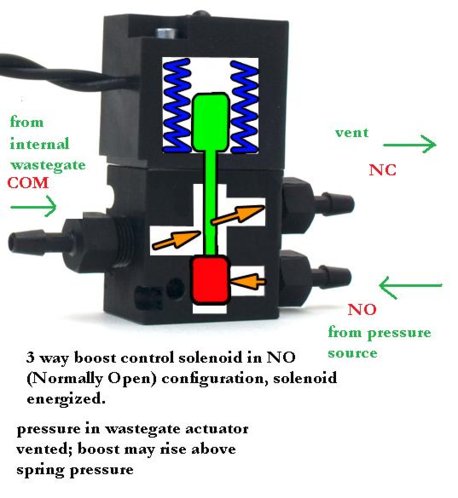leebutts
1 AYC Bar
So...
I've always been curious about the way my aftermarket solenoid was plumbed in by my tuner.
Behold my awesome diagram!!
The red line below shows the flow when the solenoid is off, the green when it's on.
I'm trying to work out how to improve the boost curve as it looses 2 or 3 psi above 4500. I'm wondering if plumbing the current output (that goes to atmosphere in the diagram) back into the intake before the turbos will help.
Would the suction from the intake help to "pull" the wastegates closed?
I'm thinking maybe the wastegates are staying open/leaking due to the increased boost.
I've always been curious about the way my aftermarket solenoid was plumbed in by my tuner.
Behold my awesome diagram!!
The red line below shows the flow when the solenoid is off, the green when it's on.
I'm trying to work out how to improve the boost curve as it looses 2 or 3 psi above 4500. I'm wondering if plumbing the current output (that goes to atmosphere in the diagram) back into the intake before the turbos will help.
Would the suction from the intake help to "pull" the wastegates closed?
I'm thinking maybe the wastegates are staying open/leaking due to the increased boost.



